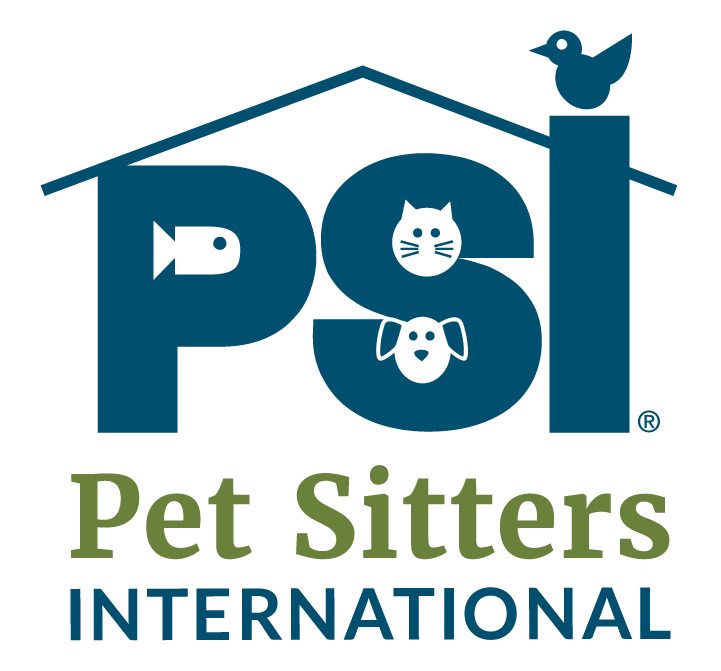5 Mistakes New Pet Sitters Make—and How to Avoid Them
May 2025. Updated October 2025 | Beth Stultz-Hairston, Pet Sitters International
If you’ve just opened your pet-sitting or dog walking business, congratulations! Starting your pet-sitting career is both exciting and rewarding; however, like any profession, it comes with its own set of challenges. At Pet Sitters International, we've observed common pitfalls that new pet sitters often encounter. By being aware of these mistakes, you can set yourself up for success and provide the best care for your clients' pets.

Here are five mistakes new pet sitters often make that you want to avoid:
1. Skipping Liability Insurance
One of the most dangerous mistakes a new pet sitter can make is neglecting to obtain liability insurance. Perhaps you are just getting started and think you cannot afford pet-sitter liability insurance yet. Or maybe it’s on your to-do list, but you want to go ahead and accept pet-sitting requests before you get your coverage. Whatever the case may be, not having pet-sitter liability insurance is risky business. Maintaining insurance coverage is a hallmark of running a professional pet-sitting service. Imagine a running toilet or leaky faucet overflows and damages the flooring on the upper and lower levels of a client’s home—or a client’s dog dashes past you and is seriously injured when hit by a car. Not having insurance to cover such costs could cripple your pet-sitting business.
Do not accept a pet-sitting request until you have your pet-sitter liability insurance coverage.
Mistakes or accidents can happen (even to experienced pet sitters)—and mistakes like the ones above can result in insurance claims totaling more than $100K! Not having insurance coverage if a situation did arise would likely result in legal action by your client and could lead to financial ruin for your company. Both would lead to negative press and word of mouth that could quickly damage your pet-sitting company’s reputation.
IMPORTANT: Being underinsured (or having insurance that isn’t tailored to pet sitting) can be equally damaging to your reputation and put you in financial danger. General business liability insurance policies often exclude pets and property, so make sure you have coverage that is created for pet-care businesses. Then, consult with your insurance provider to make sure you have obtained an adequate amount of Care, Custody or Control (CCC) coverage. This is the component that is essential to pet sitters and covers the pets in your care, as well as the personal contents of your clients' homes. With veterinary costs steadily increasing, selecting the lowest CCC coverage available could prove to be a costly mistake for your pet-sitting business (and your reputation).
2. Failing to Obtain Detailed Pet Information
We sometimes hear new pet sitters—especially those who previously cared for pets as gig work or for friends and family—say, “My clients will think filling out a contract and pet profile sheets is too formal, so I don’t think I’ll use them.” Big mistake. In addition to the legal necessity of having a signed pet-sitting contract (also called a services agreement) in place with every client, documenting detailed pet information is necessary to make sure you can provide the best care. Every pet has unique needs and routines. Failing to collect comprehensive information—such as dietary restrictions, medical history, and behavioral traits—can result in inadequate care.
Not having this information can also put you at risk. For example, one question you should ask in your forms is: Has your pet ever bitten/scratched anyone (pet or human)? It's important to be specific when asking this question, as simply asking a pet parent if their pet is "aggressive" or "has shown signs of aggression" will likely yield a quick answer of "absolutely not!" (And of course, a pet who has previously bitten/scratched may very well not be aggressive.) In the pet profile sheets available through PSI, we ask this question: Is there any reason I should approach your pet with caution?
Remember, as much as you want to help every pet that crosses your path, you need to know up front if there is potential for you to be hurt. One bad bite can end your career as a pet sitter, so make your own self-care a priority by asking that question. This blog post shares five questions you should always ask about a pet’s health and behavior history.
3. Neglecting Professional Development
The pet-care industry is continually evolving. Failing to stay up to date on best practices, animal behavior, and first aid keeps you from providing the best care and will ultimately impact your company’s potential for success. PSI's Global Standards for Pet-Sitting and Dog-Walking Businesses offers a framework you can follow to ensure you are meeting high industry standards and following best practices.
We sometimes hear from pet sitters who are discouraged by comments they’ve received from friends, family or even potential clients. The ideas that “anyone can do this” or “pet sitting is just playing with cats and dogs all day” are still prevalent. But consider this: If you don’t prioritize continuing education and take advantage of pet-sitter trainings and courses, aren’t you essentially saying the same thing—that anyone can do this (no special training required)?
If you want to be taken seriously as a pet sitter, you have to take pet sitting seriously. You should prioritize education from the beginning of your career. The good news is that you don’t have to have a large budget for training, especially when you are just starting out. For example, at PSI, we offer members a free online training each month in our Monthly Member Toolkit and have on-demand webinars in our free Learning Library in the Members Area of petsit.com. For hands-on training and experience, you could volunteer at your local animal shelter.
Participating in ongoing education and obtaining certifications, such as PSI's CPPS-Certified Professional Pet Sitter® designation, enhances your credibility and skills and will also help your business stand out and gain new clients.
4. Overcommitting and Not Saying “No”
Eager to grow your business as a new pet sitter, you may find yourself tempted to take on too many clients or to accept clients/assignments that you know aren’t a good fit. Both mistakes can be a recipe for disaster. Overcommitting can lead to burnout and compromised service quality. It's important to be honest about your limits, including how many visits you can reasonably make in a day and if there are any pets you shouldn’t offer care for (e.g., pets that have a bite history or dogs that are too large for you to physically handle).
You may also need to decline service if a client is outside your service area (believe us, having too large a service area is an easy way to burnout—fast!), if you have concerns about the pet’s environment or behavior, or if the client’s request doesn’t align with your company policies (e.g., they want you to share visits with their friend, they ask for every other day visits, etc.).
It can be difficult to turn down the requests, especially when you need the money, and your huge heart and desire to help pets may make saying “no” even more difficult; however, understand that saying “no” is sometimes a must—to reduce your stress level, to keep you safe as you perform your visits, and to ensure that you don’t put your clients and their pets at risk.
This blog post from PSI shares reasons to turn down a pet-sitting request and how to say “no.”
Overcommitting and not having clear boundaries in place can also quickly lead to burnout, even if you are just starting your professional pet-sitting career. While running a small business—particularly one in the pet-care services industry—seems to leave little time for much else, it does not mean that you have to put yourself at the bottom of your to-do list. These tips can help you prioritize your self-care, even as you work to start and grow your pet-sitting business.
5. Underpricing Your Services
If you are just starting your pet-sitting or dog-walking business and trying to build your client base, it can be very tempting to set very low prices. You may hope that cheap rates will get your phone ringing or the email inquiries and social-media messaging rolling in, but does this really align with your business plan? When comparing rates to other pet sitters and dog walkers in your area, be sure to differentiate between professional pet-sitting and dog-walking businesses and hobbyists. As a professional pet sitter or dog walker, you should compare your prices with other professional pet-care businesses who maintain pet-sitter insurance, obtain an appropriate business license or home business permit, if required, etc. Individuals/gig workers who advertise on pet-sitting platforms and apps (but don’t actually operate their own business) and other non-professional sitters are able to offer unrealistically low rates because they do not have the same overhead costs for professional credentials, so they do not provide an accurate comparison for your services.
This PSI blog post shares detailed recommendations to help you set your pet-sittting and dog-walking rates.

Learn from other pet sitters and build your support network
Avoiding these common mistakes can help you set the foundation for a successful and reputable pet-sitting business, but you’ll need ongoing support. Networking with other local professional pet-sitting business owners (as well as connecting with others around the globe in online groups and in-person conferences) is one of the most important steps you can take in your career. There’s likely no situation you’ll encounter that another pet sitter hasn’t already experienced before and having fellow pet-care professionals you can call on for advice will help you avoid other mistakes as you move forward in your career.
Plus, sometimes you just need to vent or share your daily joys and struggles with someone who understands what you do all day. (Not sure how to reach out to other pet sitters? Here are some networking ideas to help you get started.)
Ready to jumpstart your pet-sitting career?
Building a professional pet-sitting business on your own is hard. Whether you're starting from scratch or scaling up after initial success, it can often feel like you’re on an island trying to figure out how to build your business on your own.
At Pet Sitters International, we understand what it’s like to want to make a career out of something you love and we have good news for you: There are answers to all your questions and we can help you find them.
Since 1994, we’ve helped over 40,000 people just like you start and grow a profitable, professional pet-sitting business. We invite you to learn more about PSI member benefits and look forward to being a part of your pet-sitting journey!
Already a PSI member? Make sure you are taking full advantage of your member benefits and resources. This PSI Member Benefits Guide will help you put your membership to work for you.







Comments
Glory